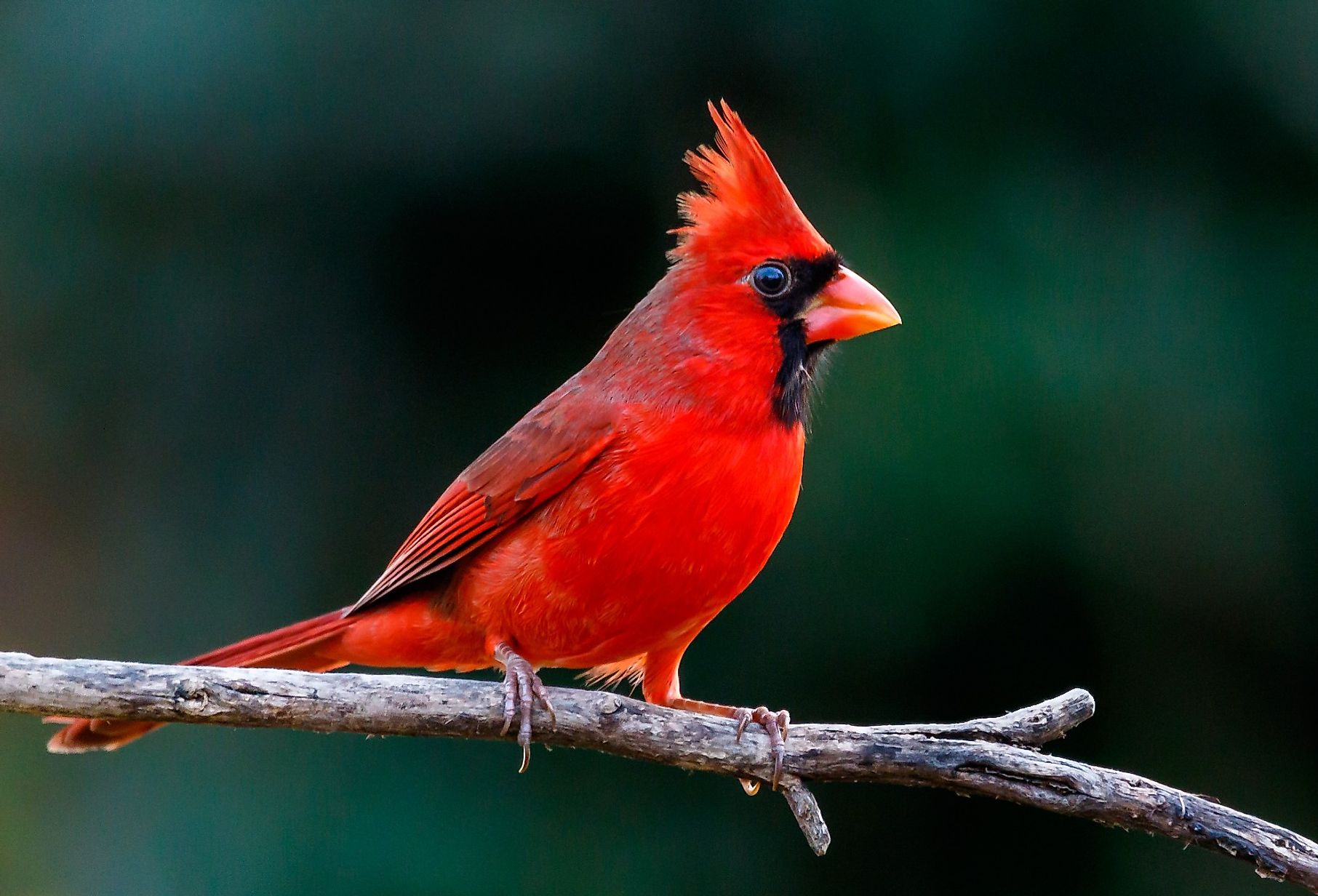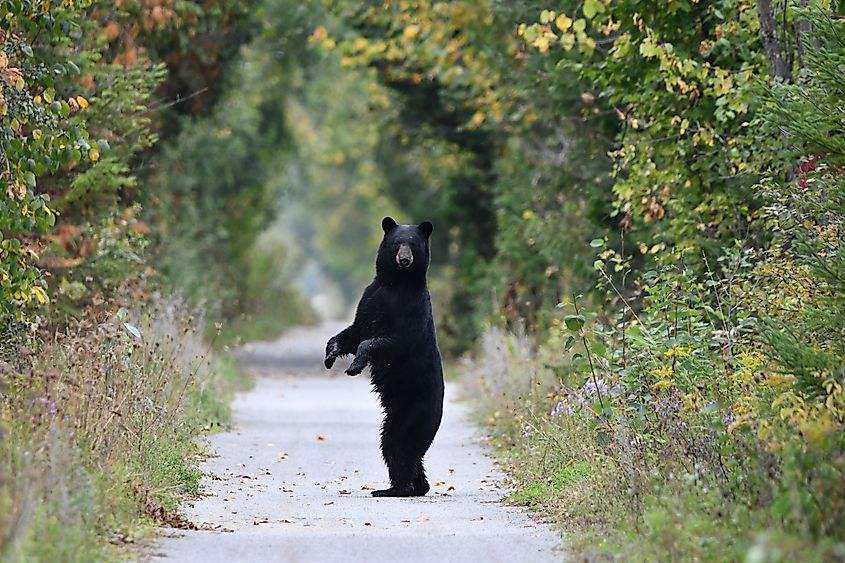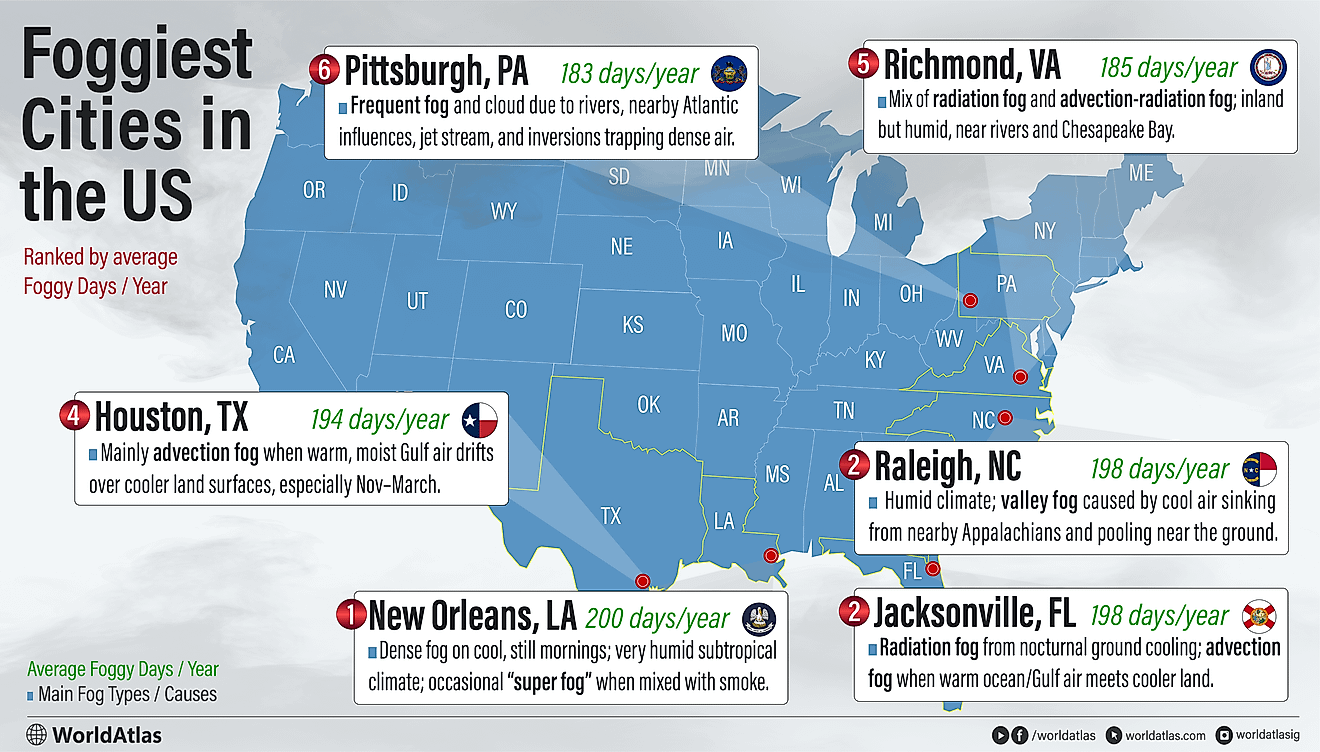
The 11 Most Beautiful Wild Animals In Virginia
Virginia is for lovers…of animals! This wild yet homely part of New England hosts a wide variety of native species, from the iconic American black bear to the reclusive and endangered Virginia big-eared bat. Some claim a contiguous territory, while others have settled in niche, fractured habitats. But regardless of whether they're found in the forested slopes of the Appalachian Mountains or the coastal regions of the Atlantic Ocean, members of the Old Dominion State must be prepared for four full seasons (or be able to migrate elsewhere when needed). Let us look at some of the amazing features these creatures have evolved in order to help them navigate the challenges and opportunities of the Northeastern United States, with a particular focus on aesthetic standouts. These are 11 of the most beautiful wild animals in the state of Virginia.
Northern Cardinal

Recognized as Virginia's state bird in 1950, the bright red northern cardinal (Cardinalis cardinalis) has also won the vote of six other states. With such captivating colors, bold crests, a sweet morning song, and a year-round presence in Virginians' backyards, it is no wonder why it has become such a popular bird in the East. While the males spring to mind when picturing this iconic bird, the soft, yellow-brown/gray bodies of the females, complete with their muted-red wings and similar standout facial features/crest, are also beautiful in their own right. As an added bonus, they also sing, which is a rarity for female songbirds in North America. The population of the northern cardinal is increasing, and since they do not migrate, they are just as likely to be seen popping off a snowy white background as a vibrant green woodland one.
Brook Trout

Virginia has two state fish: the brook trout (freshwater) and the striped bass (saltwater). Both are impressive specimens, but if pressed to pick one, one might lean to the curious appearance of the former rather than the scale-tipping girth of the latter. The brook trout (Salvelinus fontinalis) initially took the title outright in 1993 before receiving its specified "freshwater" designation in 2011. Also known as the speckled trout, owing to its plethora of yellow-green spots spread across its olive-green body (save for its red belly), this pretty fish likes to stick to cold and clean water sources, such as spring-fed streams and ponds that are rich in aquatic insects. Though relatively small, the brook trout is still a preferred game fish.
Eastern Tiger Swallowtail Butterfly

The elegant eastern tiger swallowtail butterfly (Papilio glaucus) was deemed Virginia's state insect in 1991. Found throughout the region's deciduous woodlands and bordering parks/neighborhoods where they can sip the nectar of both wild and cultivated flowers, the presentation of both males and females turns heads. The males have light yellow forewings with thick black borders and black tiger-like stripes along the top. The morph of the females can also be yellow (albeit with less blue on the hindwings) or black/dark gray with yellow spots and blue hindwings. Not only is the mature aesthetic of these insects appealing, but the butterfly's transformation out of its early caterpillar phase is one of the most beautiful processes to be found in the natural world.
Red Salamander

Another spirited mascot selection by the good folks of Virginia is the red salamander: the state amphibian. Virginia has two subspecies: the northern red salamander (Pseudotriton ruber ruber) and the Blue Ridge red salamander (Pseudotriton ruber nitidus). The former can be found across much of the state, save for the Southeast corner and the Eastern Shore, while the latter occupies the Southern Blue Ridge Mountains. Regardless of the exact region, red salamanders seek spring seeps, stream headwaters, and bogs, and can even be found under damp, rotting logs). Both varieties are large (i.e., up to 7.1 inches) and visually striking. The skin is not only bright red, thought to imitate the toxic red-spotted newt, but covered in black spots. Red salamanders are considered "secure" at the state level.
Virginia Big-Eared Bat

Granted, bats tend to be considered fodder for fear and aversion rather than objects of beauty, but the Virginia big-eared bat (Corynorhinus townsendii virginianus) is dying (literally) for a PR overhaul. The official state bat is endangered at both the state and federal level and is categorized as a "species of greatest conservation need" by Virginia. As of right now, the Virginia big-eared bat (which is the mountain version of Rafinesque's big-eared bat) is found in the caves of only a few counties on the Western border (migrating around 20 miles, on average, between their summer and winter roosts). As the name suggests, this cute little guy sports Dumbo-esque ears. Though its body length ranges from only 3.75 to 4.25 inches, its ears are roughly 1.25 inches long.
Bobcat

The nocturnal bobcat (Lynx rufus rufus) is unlikely to be seen in the wild, but its elusive nature makes it all the more beautiful. Bobcats represent one of four species of lynx. This wildcat is about twice the size of an average house cat (i.e., 24 to 40 inches/10 to 25 pounds), and is even more adept at hunting. They have very short, or "bobbed," black-tipped tails (but the underside is white – something that helps distinguish this subspecies), long legs, large ears tipped with tufts, and long cheek fur (giving them their characteristic sideburn look). Since bobcats tend to live in milder climates compared to their cousins, their fur is not as thick, nor are their paws as large (something that helps the Canadian lynx, for example, navigate snowy terrain). As with much of North America, bobcats have adapted to a wide range of habitats – tending only to avoid densely populated urban zones.
Black Bear

North America has an estimated 900,000 black bears (Ursus americanus) (the only continent on which this species roams). They can be found in every Canadian province save for one, at least 40 states, and even parts of Northern Mexico. As for Virginia, they have formed a continuous range, which is the same case for all of New England until the mid-Atlantic Coast. These robust, black-furred (always in Virginia, but sometimes a variety of shades in the West) ursines like to take cover in densely wooded areas (the mature oak forests of the Appalachian Mountains, for instance, do nicely). They are usually shy and solitary – except during the summer breeding season or when females are caring for their cubs. These beauties will most likely be seen at dusk and dawn (hopefully from a safe distance).
American Bullfrog

The largest frog in North America can be spotted across the entire state of Virginia, so long as it is near permanent bodies of water or occasionally in cyclical wetlands. The American bullfrog (Lithobates catesbeianus) can grow upwards of 8 inches in length. But aside from its girth, this frog species can be distinguished by its green or yellowish throat, whitish or yellowish belly, rough, three-dimensional, small dark blotches, large, sometimes psychedelic-looking eyes, and large tympanum (auditory structures). American bullfrogs are well-known for their vocalizations used to establish and defend territories. Breeding occurs between May and August, followed by an underwater (or occasionally in a terrestrial burrow) winter hibernation.
Appalachian Cottontail

The Appalachian cottontail (Sylvilagus obscurus) checks those cute and cuddly boxes. This small rabbit comes in a range of earthy colors – from grayish to brown, to reddish-brown, and with black mixed in. Completing the package is a white underside, gray and black cheeks, and black accents on the forehead and front edges of the ears. As the name suggests, this species is differentiated from the eastern cottontail by its propensity for higher elevations within the Appalachian range, such as those found in the Western part of the state. Appalachian cottontails rely on dense forests in which they can hide out and build their covered ground nests, which they line with grass and fur. The typical home range is only about 4 acres, yet this species is rarely spotted because of its secrecy. It is thought that the eastern cottontail is displacing its Appalachian cousin in areas that are heavily impacted by human activity.
Eastern Painted Turtle

Virginia's most common basking turtle is also one of the most beautiful and colorful creatures on this list. The medium-sized (up to 7 inches in length) eastern-painted turtle (Chrysemys picta picta) has a black or olive green shell with a pale-red stripe down the middle and bright red, artistic markings around the edges. The body is even more vibrant – with red swirls and yellow neck stripes that really do look like they have been painted on. This expressive reptile can be found statewide, around slow-moving and permanent freshwater sources (everything from ponds to ditches) that also offer aquatic vegetation and basking opportunities. It is more likely to be seen in the fair-weather season but will sometimes emerge from hibernation to bask on warm winter days.
Rusty Patched Bumble Bee

The adorable rusty-patched bumble bee (Bombus affinis) just likes to bounce between flowering plants, harvesting nectar and pollen in peace. Unfortunately, this species of bumble bee (there are 21 known species in America) is in a dire state. It was listed as federally endangered in 2017. Locally, it is considered a "species of greatest conservation need" (at the highest tier), and it is categorized by the Department of Conservation and Recreation Natural Heritage Program as globally imperiled and critically imperiled in Virginia. This black and yellow (with a patch of rust-colored hairs on its mid thorax) insect used to be found throughout much of the Commonwealth, but it is currently confined to just five of Virginia's Northwest counties. The steep population decline is attributed to several factors, but pathogens and pesticides are believed to be the main culprits.
It is a thing of beauty how many animals claim dominion over the Old Dominion State. But while many of these eye-catching creatures are thriving, some are in the midst of an existential crisis. It is important to celebrate the visual allure of the natural world but also to pry deeper into the ecological role that each of these eleven species plays and perhaps even conjure an equitable attitude towards all wildlife, big or small, obviously beautiful or otherwise.











